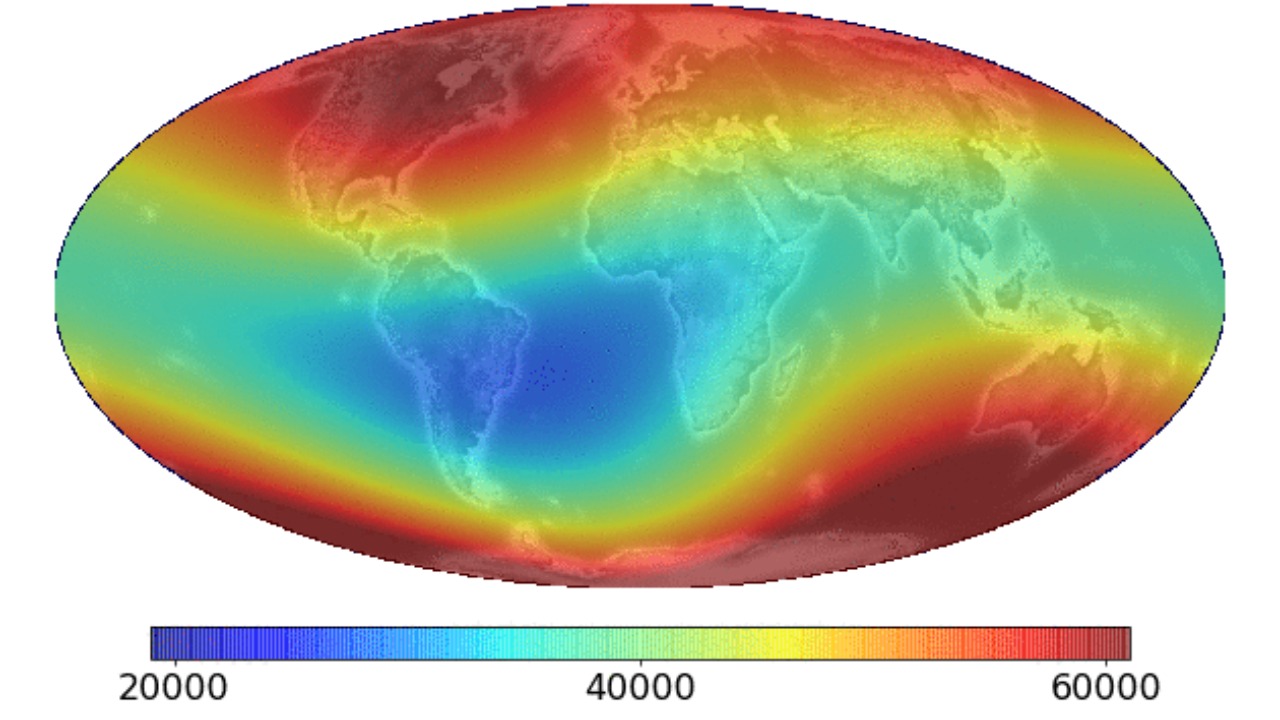
The South Atlantic Anomaly (SAA), a significant weak spot in Earth’s magnetic field, is expanding and evolving into two distinct lobes. This development, tracked by the European Space Agency’s (ESA) Swarm satellite constellation, has been accelerating since the early 2020s. The anomaly’s growth increases radiation exposure in the affected region, posing heightened risks to satellites and spacecraft operating in these areas. This phenomenon, stretching from South America to southern Africa, underscores the need for ongoing monitoring and research to mitigate potential impacts on space technology.
What is the South Atlantic Anomaly?
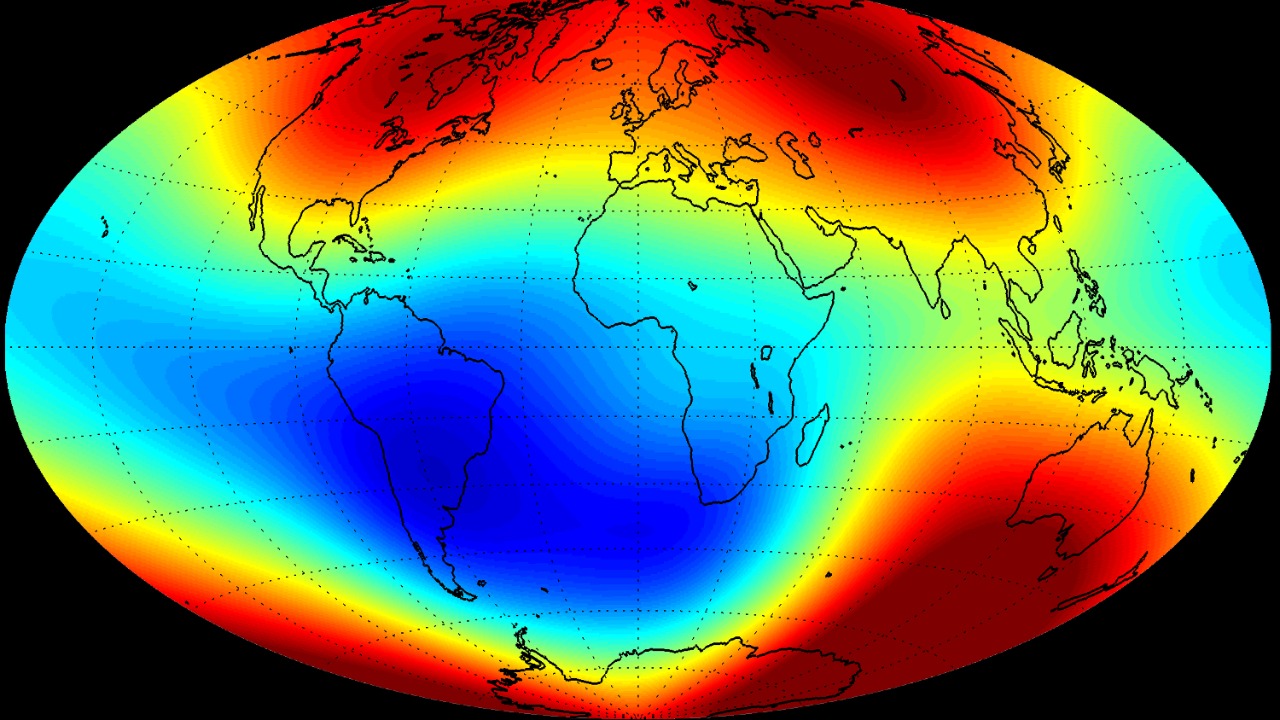
The South Atlantic Anomaly represents a substantial dent in Earth’s magnetic shield, covering approximately 8 million square miles over the South Atlantic Ocean. Within this region, the magnetic field strength drops to as low as 24,000 nanoteslas, significantly lower than the global average of 50,000 nanoteslas. This reduction allows more cosmic and solar radiation to penetrate the atmosphere, increasing the risk of radiation exposure for satellites and other space technology [CBS News].
The origins of the SAA are linked to unusual flow patterns in Earth’s molten outer core. Specifically, the anomaly is associated with reversed magnetic flux patches beneath the African continent, which have been weakening the magnetic field. These patterns were first identified in the 1950s during satellite observations [Discover Magazine]. Historical detection of the anomaly includes early measurements by NASA’s Pioneer 4 probe in 1958 and subsequent mapping by ESA’s Swarm mission, launched in 2013, which has provided continuous data on its extent [ESA].
Recent Evidence of the Anomaly’s Growth
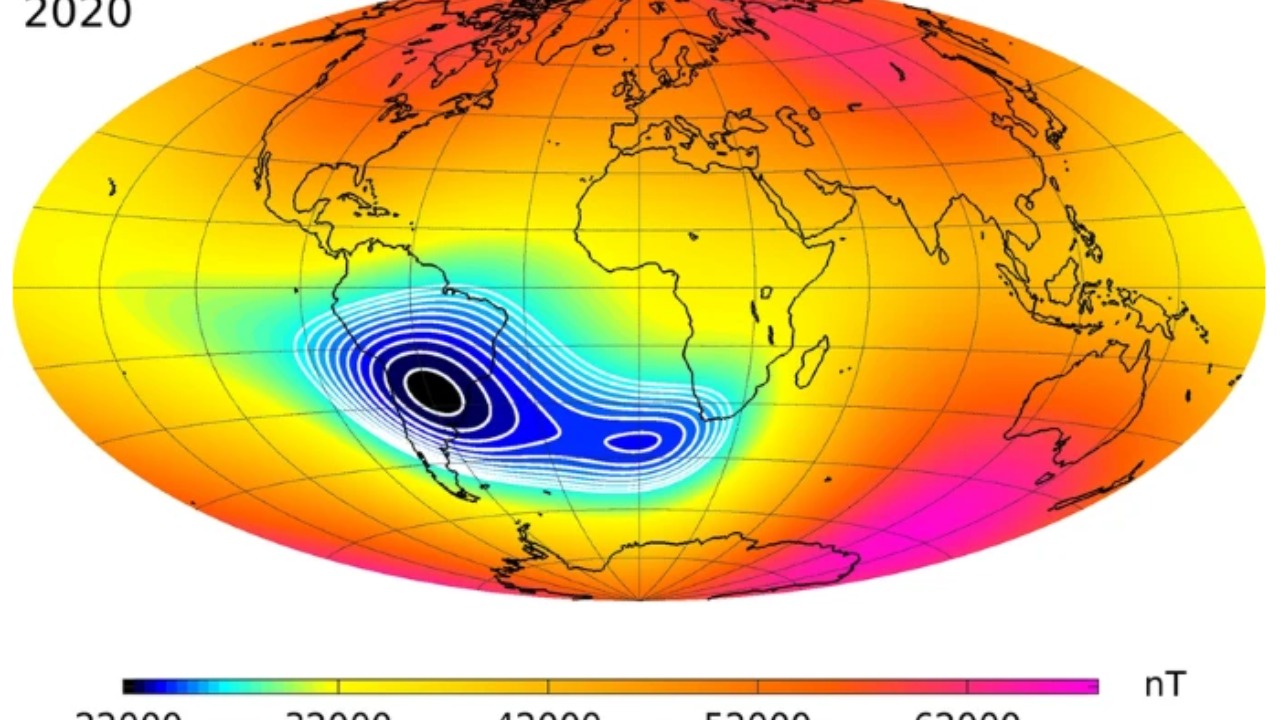
Recent findings from the Swarm satellites indicate that the SAA’s area has been expanding westward at approximately 12 miles per year since 2014. The point of lowest magnetic intensity has shifted from 25°S, 55°W to a more southerly position near 35°S, 40°W by 2023 [Live Science]. This westward expansion is accompanied by a splitting phenomenon, where a second weak lobe has emerged east of the original, centered around 0° latitude and 30°E longitude. In this new area, the magnetic field strength has dropped below 22,000 nanoteslas, according to 2020 data analysis [UNILAD].
The growth of the SAA correlates with accelerating changes in the core’s magnetic flux, including a 5% overall decline in field strength over the anomaly since the Swarm mission began. This decline has been confirmed through precise vector magnetometer readings, highlighting the dynamic nature of Earth’s magnetic field and the need for continuous monitoring [ESA].
Impacts on Satellites and Space Technology
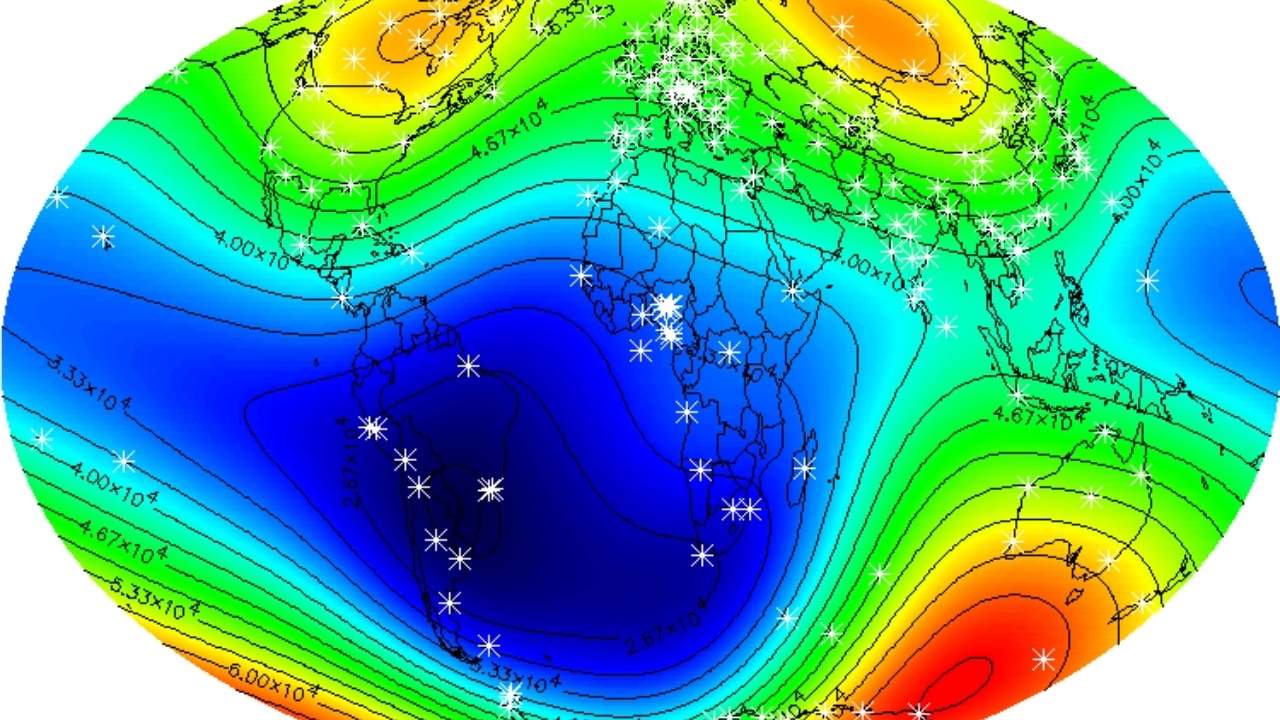
The weakening of the magnetic field in the SAA exposes satellites in low-Earth orbit to 10-20 times more high-energy particles than elsewhere. This increased exposure has led to more frequent glitches and short-circuits, as evidenced by the Hubble Space Telescope, which has powered down instruments over 1,000 times since 1990 when passing through the SAA [Discover Magazine]. The International Space Station crew also avoids external activities during SAA passages due to radiation spikes up to 50 times background levels. Recent reports from 2023 indicate that commercial satellites like Starlink are experiencing more frequent anomalies in the region [CBS News].
Broader risks include potential failures in over 1,500 active satellites that traverse the SAA daily. ESA scientists warn that the anomaly’s growth could double malfunction rates by 2030 without enhanced shielding. This highlights the critical need for improved protective measures and technological advancements to safeguard space assets [Live Science].
Scientific Monitoring and Future Research
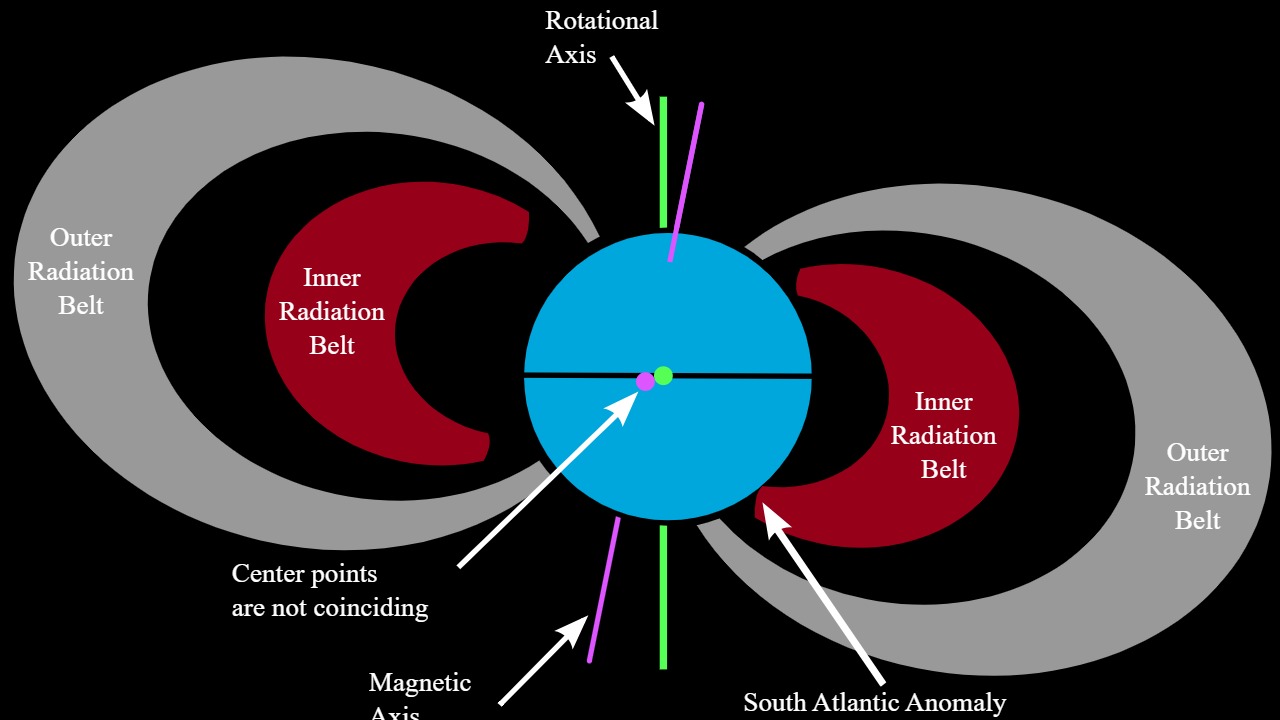
ESA’s three Swarm satellites—Alpha, Bravo, and Constellation—play a crucial role in monitoring the SAA. Equipped with absolute magnetometers, these satellites measure field changes every few months since 2013, providing the first 3D view of the anomaly’s evolution [ESA]. Complementary efforts, such as NASA’s upcoming GRACE Follow-On mission and ground-based observatories in South Africa, contribute valuable magnetic data, helping model the core dynamics driving the anomaly’s expansion [UNILAD].
Ongoing challenges include the need for improved predictive models to forecast if the SAA’s growth signals the start of a full geomagnetic reversal, a process that last occurred 780,000 years ago and could take centuries to unfold. Understanding these dynamics is essential for preparing for potential long-term changes in Earth’s magnetic environment [Discover Magazine]. As research continues, the insights gained will be vital for both scientific understanding and the practical management of space technology risks.